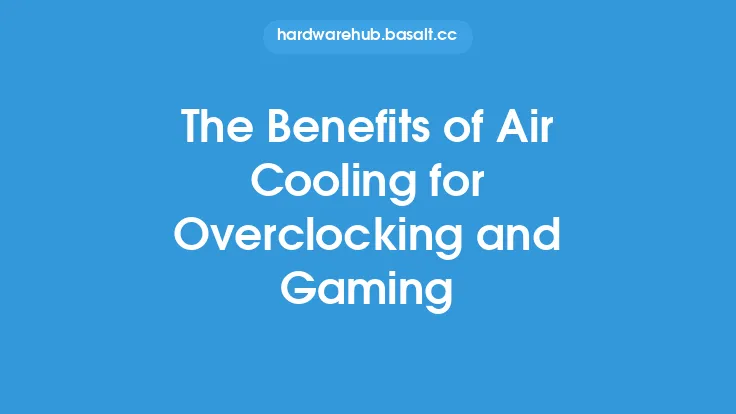When it comes to squeezing out the maximum performance from a graphics processing unit (GPU), overclocking is a technique that has been widely adopted by enthusiasts and gamers alike. Overclocking involves pushing the GPU to operate at higher clock speeds than its factory-set default, which can result in improved performance in graphics-intensive applications. However, this process also carries some risks, and it's essential to weigh the benefits against the potential drawbacks.
Introduction to GPU Overclocking
GPU overclocking is a complex process that requires a deep understanding of the underlying hardware and software components. The primary goal of overclocking is to increase the clock speed of the GPU, which is measured in megahertz (MHz) or gigahertz (GHz). By increasing the clock speed, the GPU can process more instructions per second, resulting in improved performance. However, this also increases the power consumption and heat generation of the GPU, which can lead to stability issues and reduced lifespan if not managed properly.
Benefits of GPU Overclocking
The benefits of GPU overclocking are numerous and well-documented. Some of the most significant advantages include:
- Improved performance in graphics-intensive applications, such as games and video editing software
- Increased frame rates, resulting in smoother and more responsive gameplay
- Enhanced overall system performance, making it ideal for applications that rely heavily on GPU processing
- Potential for improved performance in compute-intensive tasks, such as scientific simulations and cryptocurrency mining
- Increased competitiveness in esports and online gaming, where every frame counts
Technical Aspects of GPU Overclocking
From a technical standpoint, GPU overclocking involves adjusting the clock speeds of the GPU's various components, including the core clock, memory clock, and shader clock. The core clock controls the execution of instructions, while the memory clock governs the transfer of data between the GPU and system memory. The shader clock, on the other hand, is responsible for the execution of shader programs, which are used to perform complex graphics calculations. By adjusting these clock speeds, overclockers can fine-tune the performance of the GPU to achieve optimal results.
Risks and Challenges Associated with GPU Overclocking
While the benefits of GPU overclocking are undeniable, there are also some significant risks and challenges associated with this technique. Some of the most notable concerns include:
- Increased power consumption, which can lead to higher electricity bills and reduced system lifespan
- Elevated temperatures, which can cause thermal throttling and reduced performance
- Potential for system instability and crashes, particularly if the overclocking process is not done correctly
- Risk of damaging the GPU or other system components, particularly if the overclocking process is pushed too far
- Voiding of warranties, as overclocking is often considered a violation of the manufacturer's terms and conditions
Real-World Applications of GPU Overclocking
Despite the risks and challenges, GPU overclocking has numerous real-world applications. Some of the most notable examples include:
- Gaming, where overclocking can provide a competitive edge in online multiplayer games
- Video editing and production, where overclocking can accelerate tasks such as video rendering and color grading
- Scientific simulations, where overclocking can speed up complex calculations and data processing
- Cryptocurrency mining, where overclocking can increase the hash rate and improve mining efficiency
- Artificial intelligence and machine learning, where overclocking can accelerate the training of neural networks and improve model performance
Conclusion
In conclusion, GPU overclocking is a complex and nuanced technique that offers numerous benefits, but also carries some significant risks. While it can provide improved performance and competitiveness in various applications, it's essential to approach overclocking with caution and carefully weigh the potential drawbacks. By understanding the technical aspects of GPU overclocking and taking a measured approach, enthusiasts and gamers can unlock the full potential of their graphics processing units and achieve optimal results. However, it's crucial to remember that overclocking is not for everyone, and it's essential to prioritize system stability and reliability above all else.





